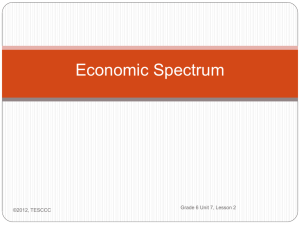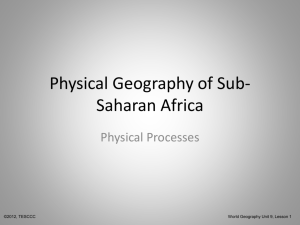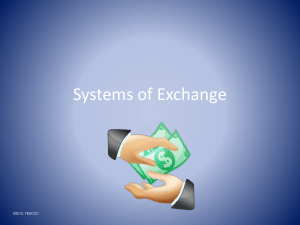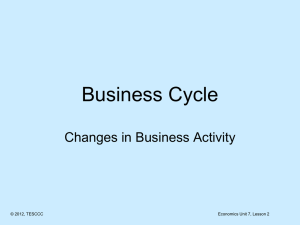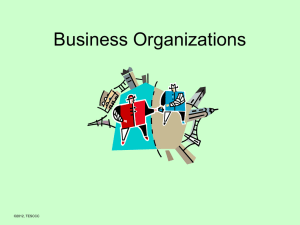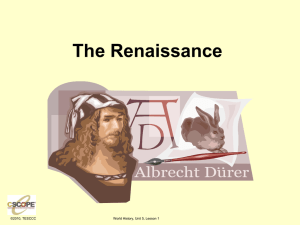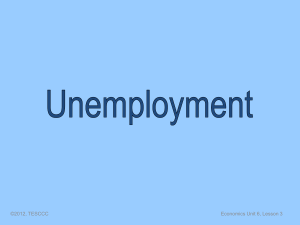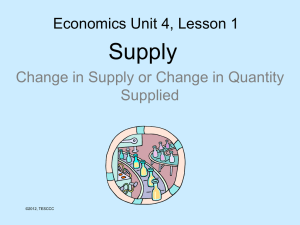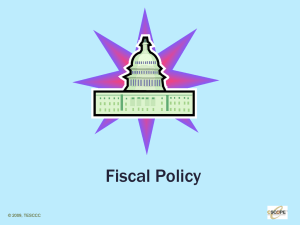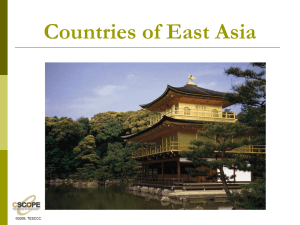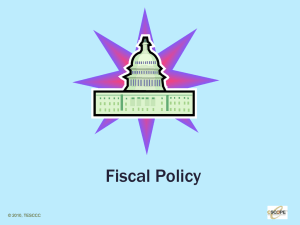Free Enterprise
advertisement
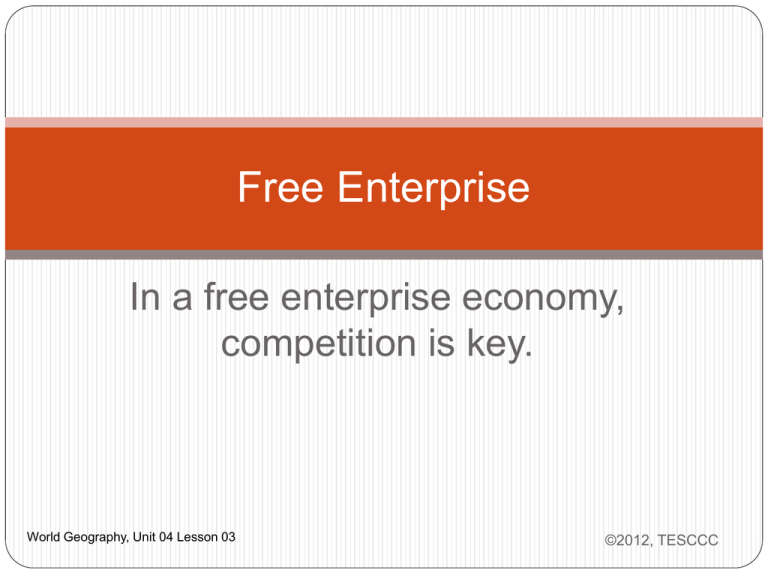
Free Enterprise In a free enterprise economy, competition is key. World Geography, Unit 04 Lesson 03 ©2012, TESCCC What is competition in a Free Market? Free Market- Also known as a Free Enterprise or Capitalism, is an economic system that is based on private ownership of the means of production and the creation of goods or services for profit Competition- Rivalry between two or more businesses striving for the same customer or market AT&T vs Verizon Walmart vs Target Dish vs Direct TV vs U-Verse Pepsi vs Coke ©2012, TESCCC Means of Production The three inputs required for production are: labor (including human capital), land (i.e., natural resources, which exist prior to human beings) and capital goods. Capitalism entails the private ownership of the latter two — natural resources and capital goods — by a class of owners called capitalists, either individually, collectively ©2012, TESCCC Factors of Production A product is any good produced for exchange on a market. A commodity refers to any good exchanged in a market, but more solely products such as raw materials. There are two types of products: capital goods consumer goods Capital goods (i.e., raw materials, tools, industrial machines, vehicles and factories) are used to produce consumer goods (e.g., televisions, cars, computers, houses) to be sold to others. ©2012, TESCCC Explain how these images demonstrate competition and the free enterprise economic system. ©2012, TESCCC ©2012, TESCCC Life Without Competition Without our companies engaging in competition, some companies and businesses would be monopolies… Monopoly-To dominate by excluding others; Exclusive control by one group of the means of producing or selling a commodity or service ©2012, TESCCC Free Enterprise What exactly is a free enterprise economy? ©2012, TESCCC Free Enterprise System A market economy in which individuals depend on supply, demand, and prices to determine the answers to the four economic questions of “what to produce,” “how to produce,” “how much to produce,” and “for whom to produce.” The system has four characteristics: economic freedom, voluntary exchange, private property, and the profit motive. ©2012, TESCCC Definitions • Economic Freedom- The right of an individual or corporation to buy, sell or trade goods; right to pursue their own interests; freedom from regulation • Voluntary Exchange- An act or agreement between two or more free individuals and/or organizations to buy, sell or trade a good or service • Private Property- Land/belongings owned by a person(s) and kept for their exclusive use • Profit Motive- The intent to achieve monetary gain in a transaction; the desire for profit that motivates one to engage in business ventures/deals ©2012, TESCCC ©2012, TESCCC Global Economic Systems • Free Enterprise (Free Market, Capitalism) • Socialism (Mixed economy) • Communism (Command economy) • Where would the US lie on this economic spectrum? ←------↨----------------↨------------------↨-------→ Free Market Socialism Communism ©2012, TESCCC U.S. Free Enterprise Communism Socialism Capitalism Government Control Competition Public Ownership (land and/or natural resources ©2012, TESCCC
